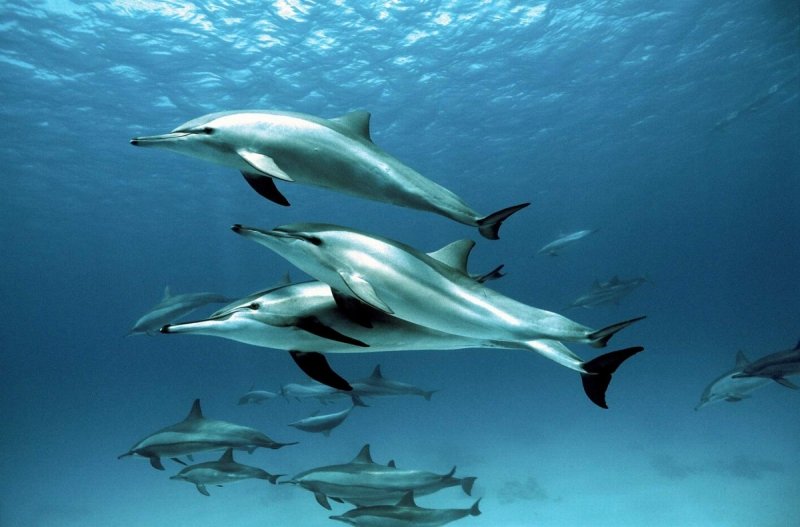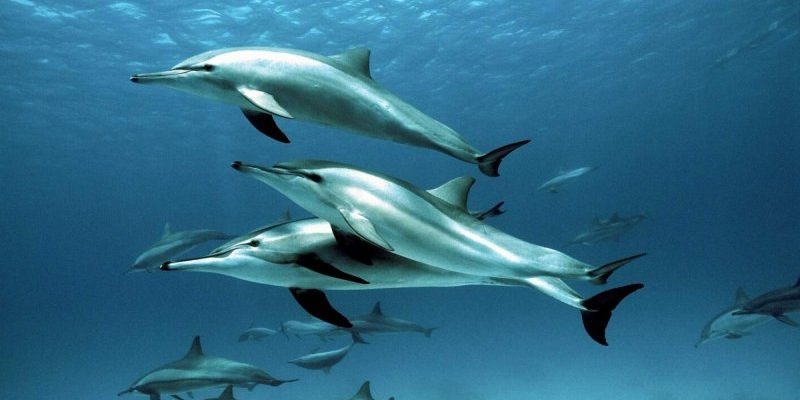
These myths often create a colorful tapestry that reflects how humans connect with the natural world. Just like the way we might share tall tales at a campfire, cultures around the globe have woven rich stories about spinner dolphins, attributing to them special powers, wisdom, or even roles as guardians of the sea. So, if you’re curious about what makes spinner dolphins such an integral part of folklore and culture, grab a cup of coffee, and let’s dive deeper together.
Understanding Spinner Dolphins
To truly appreciate the myths and cultural beliefs surrounding spinner dolphins, it helps to know a bit about them. These dolphins, known scientifically as *Stenella longirostris*, are famous for their acrobatic spins and leaps out of the water. They can twist and turn in mid-air, almost like a gymnast performing on a balance beam, which is how they got their name. Think of it as their very own way of showing off, and trust me, it works!
Spinner dolphins are highly social animals, often seen in large pods that can number in the hundreds. They communicate with each other through a series of clicks, whistles, and body language, which helps them maintain their close-knit social structures. Imagine a lively group of friends who naturally understand each other through shared experiences—that’s what spinner dolphin pods are like!
These dolphins typically inhabit warm, tropical waters, so you might find them around places like Hawaii, the Bahamas, and the Pacific Islands. Their playful behavior and stunning displays have made them a favorite among marine enthusiasts and casual observers alike. But what about the stories we’ve created around them? Let’s explore some of the most engaging myths and beliefs!
Myths of Spinner Dolphins in Various Cultures
Across different cultures, spinner dolphins have become symbols of various traits and lessons. In ancient Hawaiian culture, for example, spinner dolphins were believed to carry the souls of the deceased, guiding them safely through the waters of the afterlife. This idea paints a picture of dolphins as protectors, watching over both the living and those who have passed on.
In Maori mythology, dolphins signify friendship and love. The Maori viewed them as spiritual guides that brought wisdom and good fortune. Many stories tell of dolphins aiding fishermen by guiding them to schools of fish or helping lost individuals find their way back home. This belief illustrates how deeply intertwined nature can be with human experiences and relationships.
Similarly, in some parts of Africa, dolphins are thought to be messengers between humans and the gods. Their playful antics are often seen as a sign of joy, encouraging humans to embrace happiness and connection with the sea. These various cultural beliefs reflect not just a fascination with the dolphin’s beauty, but also an appreciation of their intelligence and social nature.
Spinner Dolphins as Symbols of Freedom and Joy
Many cultures associate spinner dolphins with freedom and joy. Their playful jumps and spins evoke feelings of happiness and lightness. When you watch a spinner dolphin dance through the waves, it’s hard not to feel uplifted! The way these dolphins interact with each other, often engaging in playful chases, reminds us of the importance of leisure and connection.
In some coastal communities, spinner dolphins are seen as a symbol of resilience and adaptability. Just like they navigate the ever-changing ocean, people often look to them for inspiration when facing life’s challenges. The idea here is that if dolphins can thrive in diverse environments, so can we!
This connection to freedom often expands beyond individual perspectives to societal values. Communities that honor these amazing creatures often advocate for ocean preservation and respect for marine life. By promoting awareness of the importance of dolphins, they help foster a culture of conservation that can impact entire ecosystems.
Scientific Perspectives and Misunderstandings
While many myths about spinner dolphins are enchanting, some misunderstandings can also lead to misconceptions. For instance, there’s a belief that spinner dolphins can become “entangled” with humans, leading to feelings of depression or even harm. In reality, these dolphins are known for their intelligence and strong social bonds, and there’s no sound scientific evidence suggesting they experience this kind of emotional entanglement.
Another common myth is that spinner dolphins are always friendly and approachable. While many people have had great interactions with them, it’s essential to remember that they are wild animals. Just like humans, they have different personalities and moods. Approaching them in their natural habitat should be done with respect and caution.
Understanding these differences allows us to appreciate spinner dolphins more fully. When we debunk myths and better understand these creatures, we foster a healthier relationship with them and the environments they inhabit.
Conservation Efforts and Cultural Impact
As enchanting as spinner dolphins are, they face several threats in the wild. Their habitat is threatened by pollution, climate change, and human interference. Organizations dedicated to marine conservation often use spinner dolphins as a flagship species to raise awareness about broader environmental issues. This means that the stories and beliefs surrounding these dolphins can play a significant role in conservation efforts.
Cultural beliefs can motivate communities to protect their natural resources. When people view spinner dolphins as part of their identity, they are more likely to advocate for the preservation of their habitats. It’s like a ripple effect—caring for one species can lead to overall improvements in ocean health.
Many coastal communities have started eco-tourism projects centered around spinner dolphins. These initiatives ensure that local economies benefit from conservation efforts while allowing people to appreciate these dolphins in their natural ecosystems. This balance between enjoyment and preservation is a beautiful way to honor the dolphins’ importance in culture and nature.
Connecting Myths with Reality
Ultimately, the myths and cultural beliefs surrounding spinner dolphins are a testament to our connection with the natural world. They remind us of our shared responsibility to protect these marvelous creatures and their habitats. By learning about and appreciating the stories that different cultures have built around dolphins, we foster a greater understanding of their ecological role and significance.
The next time you see a spinner dolphin in action, remember: you’re witnessing a creature that has sparked the imagination of people for generations. They are more than just playful animals; they symbolize freedom, joy, and the intricate connections between humans and nature.
As we continue to explore and learn about spinner dolphins, let’s carry those lessons forward—preserving the beauty of the oceans and nurturing the cultures that celebrate them. Whether it’s through stories, conservation efforts, or simple admiration, we each play a role in honoring these incredible animals.
By cherishing the myths and realities of spinner dolphins, we not only enrich our understanding of them but also inspire future generations to protect the waters they call home.

